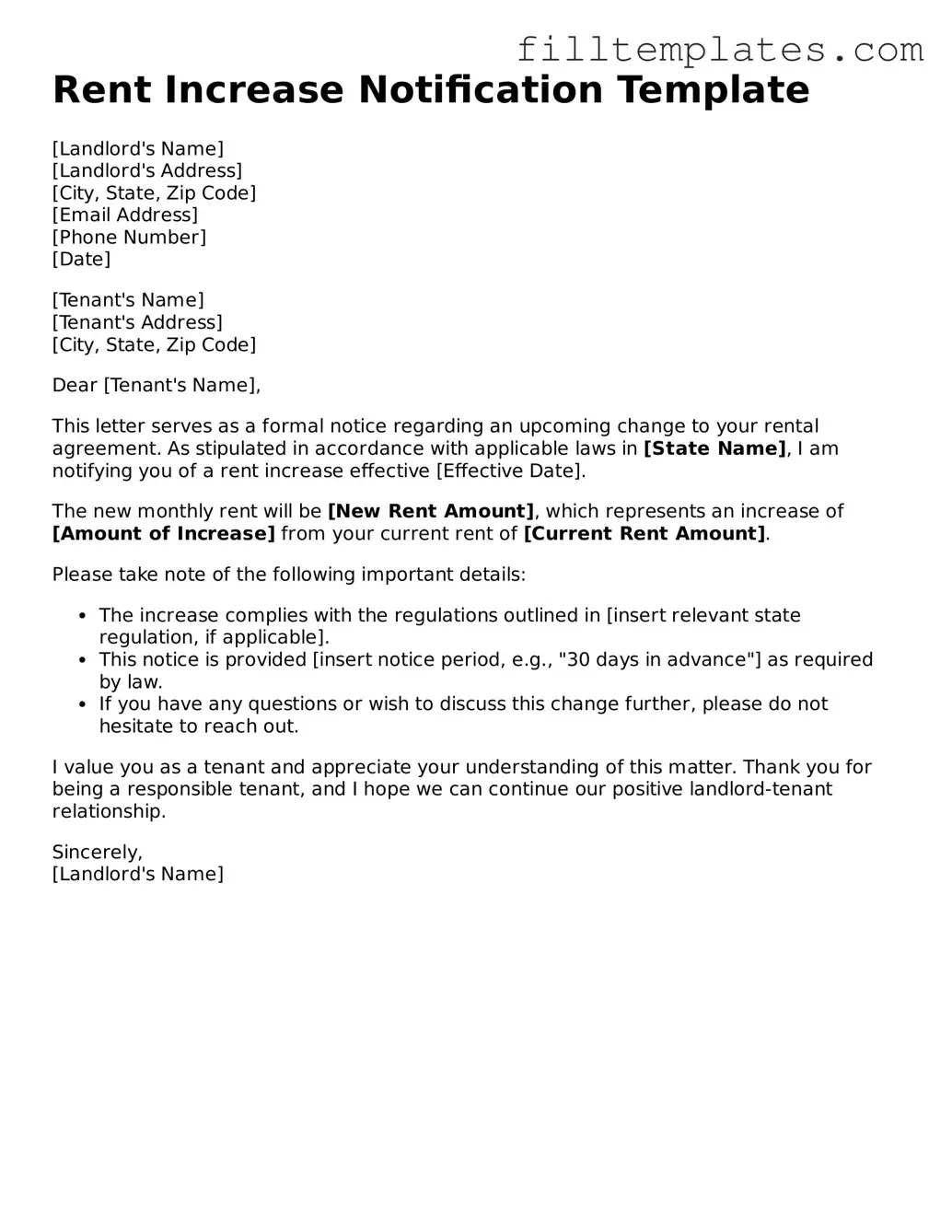Rent Increase Notification Template
[Landlord's Name]
[Landlord's Address]
[City, State, Zip Code]
[Email Address]
[Phone Number]
[Date]
[Tenant's Name]
[Tenant's Address]
[City, State, Zip Code]
Dear [Tenant's Name],
This letter serves as a formal notice regarding an upcoming change to your rental agreement. As stipulated in accordance with applicable laws in [State Name], I am notifying you of a rent increase effective [Effective Date].
The new monthly rent will be [New Rent Amount], which represents an increase of [Amount of Increase] from your current rent of [Current Rent Amount].
Please take note of the following important details:
- The increase complies with the regulations outlined in [insert relevant state regulation, if applicable].
- This notice is provided [insert notice period, e.g., "30 days in advance"] as required by law.
- If you have any questions or wish to discuss this change further, please do not hesitate to reach out.
I value you as a tenant and appreciate your understanding of this matter. Thank you for being a responsible tenant, and I hope we can continue our positive landlord-tenant relationship.
Sincerely,
[Landlord's Name]
